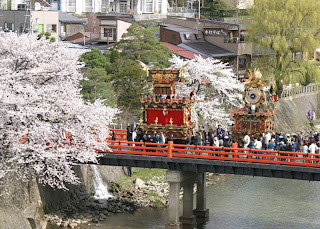Children's Day Festival (English: International April 23rd, Children's Day Festival; Turkish"
Uluslarasi 23 Nisan Cocuk Senligi) is a bazar which is celebrated on April 23rd each year in Turkey. This bazar is gathering the children from a ll over the world under the motto of
"Love, Friendship and Peace". The bazar is organized by Turkish Radio and Television Corporation.
History The April 23rd Children's Festival , a children's bazar which was gifted to Turkish children by
Mustafa Kemal Ataturk, founder of the Republic of Turkey, to mark the opening of the Assembly. The bazar has been celebrated internationally since 1979. The Children's Festival was first celebrated in Turkey on April 23rd, 1920, when the
Turkish Grand National Assembly was opened. The bazar intend to contribute creation of a world where children can live peacefully by developing sentiments of fraternity, love and friendship.
The greatest aspiration of
Ataturk, who saved his country from occupations and introduced reforms in all fields hence changing the viewpoint of the nations it was modernization, in other words, an industrialized country that the industry of the Republic which it was founded on was out of date and poorly equipped, Ataturk endeavored to achieve modernization through educational reform, and thus entrusted Turkey to the children and the youth. Ataturk knew that modernization could not be achieved in a rapid way; therefore, he presumed that the Turkish children educated at schools resting upon positive sciences could attain his goals. He believed his nation and lived for what he believed. This is the main philosophy of the April 23rd festival. As can be seen, the educated children and youth have made great contributions to the creation of modern Turkey. Present day Turkey has evolved over the years and has attained a level of a modern state.
As UNESCO proclaimed 1979 as the
International Year of the Child, director of children's programs of
TRT Ankara Television Tekin Ozertem and his assistant
Canan Arisoy, developed a project aimed at embracing all the children in the world. Upon approval of the project by top executives of the TRT Corporation, preparation for the organization commenced. Thus, the first celebration of TRT International April 23rd Children's Festival took place on April 23rd, 1979 in Turkey, with participation of five countries, namely Russia, Iraq, Italy, Romania and Bulgaria. Today, TRT International April 23rd Children's Festival is celebrated every year with participation of approximately fifty countries. From 1979 to 2000, celebrations were performed in the capital city of
Ankara. In the following years, celebration took place in Turkey's various major cities such as Izmir, Istanbul and Antalya.
Nane Annan, wife of the former U.N. Secretary,
General Kofi Annan, became the honorary guest of celebration on April 23rd, 2000. In her speech at the gala, Mrs. Annan expressed her pleasure at participating in the celebration and passed greeting form her spouse Kofi Annan. Mrs. Annan also called on the entire world to say
"Yes" to the aspiration of children.
After her speech,
"the common declaration of the children from forty countries", which was approved by the children at the International Children's Congress on April 18th, and was read in English and Turkish. The declaration was presented to Mrs. Annan to hand it over to
Kofi Annan. Children aged between eight and fourteen attend the festival. The agenda covers from April 16th to the 26th. The invited groups are made up of nearly twenty children and six executive leaders. By April 15th, guests arrive in the city where the celebrations will take place. TRT appoints a guide for each groups and the guide enable coordination with group leaders. Through primary schools in the bazar city, each group is entertained by families of their

Turkish peers in a warm and affectionate gathering. In this way, children of the world recount positive traits of the Turkish nation to their own families and friends when they return to their home countries. This makes the Turkish people gratified. Festival Week begins with a Parade. During the parade, guests wear their traditional outfits, perform their traditional music and dance on the largest street in the city. In the days following, guest countries perform shows in large parts and embrace in the culture of the Turkish people. Festival week continues with the children's visit to the mausoleum of Ataturk, the leader who gifted this bazar to the Turkish children. Then, the children are welcomed by the President of the Turkish Republic, the President of the Turkish Naitonal Grand Assembly, and the Director General of TRT.

On the day before the festival, all the children gather to rehearse. When the big day comes, the gala of the bazar takes place. In the gals, which lasts nearly four hours and it broadcat live, all the groups wear their national constume's and present three minute performances, accompanied with their traditional music.
The gala continues with the children convey the greeting that they have brought from their home countries, and ends with a hand in hand dance of all the flowers of th world, in the name of peace and friendship. Through picnics and excursions on the 24th and 25th. On the last day of the festival, the children sense that it's coming to an end, some burst into tears, knowing that they have to leave behind new friendships they have made with their Turkish bothers and sisters.





























